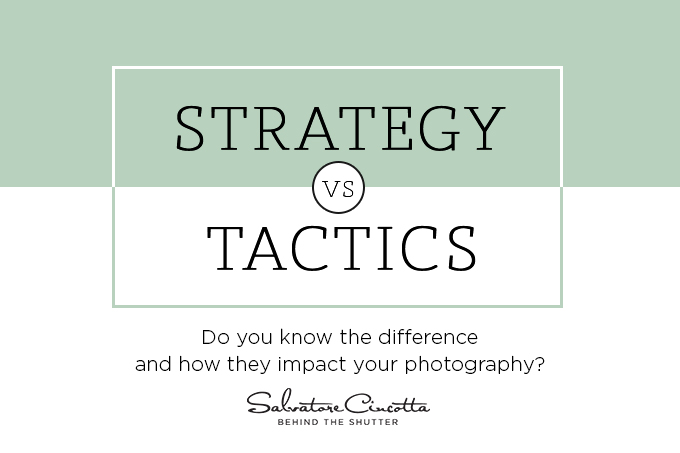
Strategy Vs Tactics in the world of photography
Many people go through their entire life not knowing or understanding what these two military terms mean or how they impact everything from your day-to-day to your financial goals to your career objectives. These terms are not just for military use, they can be applied to every aspect of our daily lives.
Let’s start with a high-level overview.
Strategy is a larger overall plan of attack.
Tactics are those actions and tasks that are carried out as part of a larger plan.
Strategy is broad big picture. Happening over a period of time.
Tactics are narrower in focus happening in the present or near future.
I meet with and talk to many photographers around the world and have many discussions about business, photography, philosophy, etc and almost everyone gets the concept of strategy. Where I see many businesses fail is in their preparation and execution of tactics. Think about it. Have you ever had a great idea? What happened? Nothing? Why? Probably because you couldn’t execute for one reason or another. Basically, you had a faulty tactical plan. This is problematic for most businesses.
Personally, this is where my business thrives. If it is one thing we are good at is execution. We see the overall strategy and we execute. It’s not really that hard, it’s about adjusting the way you think. That’s where most people get tripped up. Stop telling yourself it can’t be done. More importantly, dial back the dreamer in you. Dreams create the strategy, but some of us can’t wake up from the dream to see the tasks needed to deliver on the dream.
Let’s look at an example. A strategy might be to book more weddings through referrals. Sounds amazing, right? No advertising expenses. Fewer bridal shows. The next logical question is how? That’s where most people get lost and the dream and strategy end.
The tactics required might look like this. Network with local wedding vendors to create relationships and a referral network.
Take a step back and ask yourself, how can applying some simple strategies and tactics help me get off my ass and make sh$! happen for me, my business, and my family?
There is an old saying, “success begets more success” and if it’s one thing I have learned over the year from watching successful people – they are creatures of habit. Strategies and tactics can be addicting and help you on your path to success and creating your own habits.





This Post Has One Comment
Another approach might be that the strategy is the what (the overall goal);
and the tactics (the individual tasks) are the how to reach the overall goal.
* * *
We want a more secure venue in a time of social stress for our photo shoots.
We do research about each venue, pick the one with the least crimes reported
there, and, perhaps, hire some security of our own before the event takes place.
The strategy is to make our clients feel more secure…
The tactics are to do more research, actively participate in choosing the venue,
passing along any relevant information about each venue to help the client determine
which one to select, and perhaps bring security (discreet) of your own to the event.
Your security doesn’t have to be armed, just big, intimidating, and skilled.
* * *
That sort of thing…
Strategy is the grand overall plan…
Tactics are the actions required to reach the final goal of the plan.
(grin)